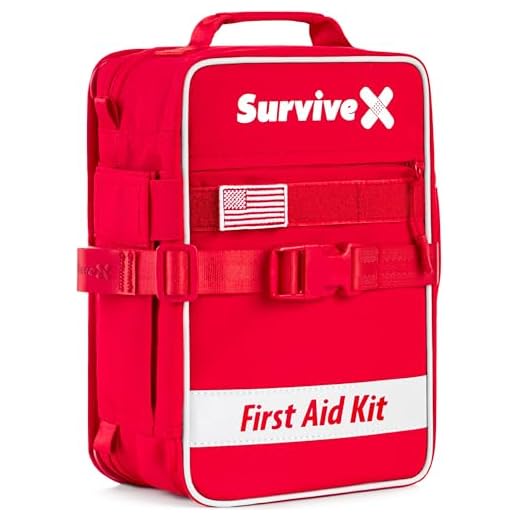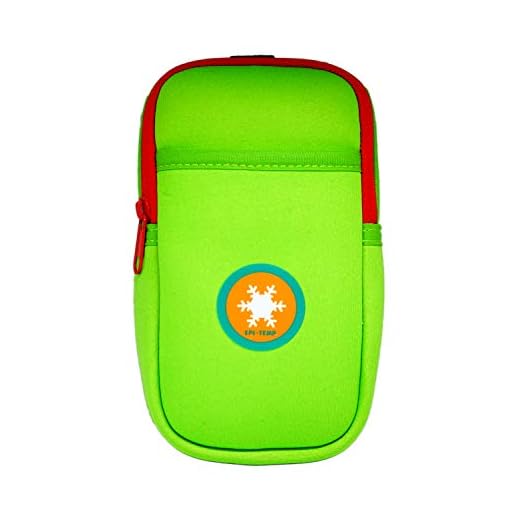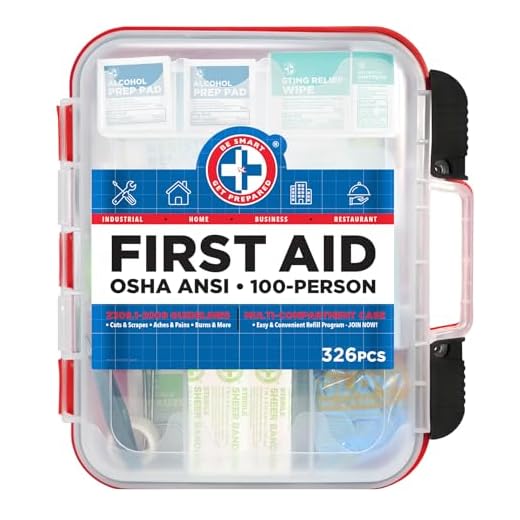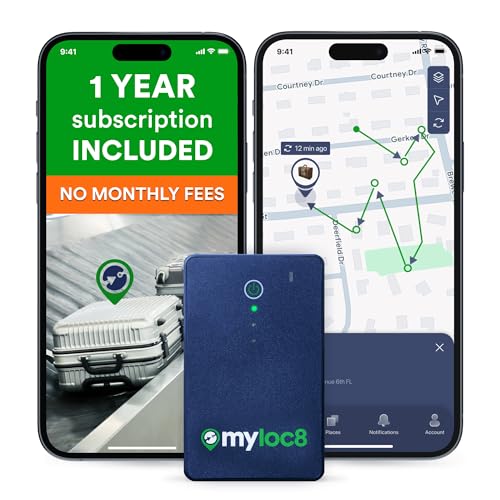





Do this: Stow a compact medical pack in your onboard bag. U.S. TSA and most European security authorities permit adhesive bandages, sterile dressings, gauze, over-the-counter topical ointments (in single containers of 3.4 oz / 100 ml or less unless declared), and scissors with blades under 4 inches in cabin baggage.
Liquids and gels follow the 3.4 oz (100 ml) rule for the standard quart-sized bag; medically necessary liquids exceeding that volume are generally permitted but must be declared to security officers for separate screening. Keep prescription labels or a physician’s note accessible to speed inspection.
Injectable supplies and devices – insulin, syringes, pen injectors, EpiPens, glucose test strips and lancets – are usually permitted in onboard bags. Transport these items in original packaging or a rigid case, carry prescription documentation, and inform the checkpoint officer before screening. Store sharps in a proper sharps container when possible.
Powder-like substances (bulk powders, protein mixes) over about 12 oz / 350 mL may trigger additional screening or be requested to go into checked baggage on some routes; policies vary by carrier and destination. Aerosol medications, oxygen cylinders and lithium batteries have airline-specific hazardous-material limits – obtain airline approval for portable oxygen concentrators and check restrictions for pressurized canisters.
Pack medications and wound supplies in a clear, labeled pouch; keep prescriptions in original bottles and include a brief doctor’s note for injectables or prescription-only items. Verify the departure and arrival country rules and your airline’s policy before flying, and place all items you will need during flight in your cabin bag for quick access.
Medical emergency packs in cabin bags: rules and practical checklist
Bring a compact medical emergency pack in your cabin bag: keep prescription medications in original labeled containers with a printed prescription or physician’s note, place gels and liquids in containers ≤100 ml inside a single clear resealable bag, and store injectable devices in a puncture-resistant case with documentation.
U.S. Transportation Security Administration permits adhesive bandages, gauze, medical tape, antiseptic wipes, oral tablets and ointments in onboard bags; scissors with blades shorter than 4 inches meet screening criteria. Medicinal liquids for personal treatment (insulin, saline, liquid meds) may exceed 3.4 oz but require declaration at the checkpoint.
Needles, syringes and epinephrine injectors should be accompanied by a physician’s note and kept in a rigid sharps container; inform the security officer before screening. Place spare batteries for medical devices in carry-on and follow the carrier’s guidance for battery-powered equipment or portable oxygen concentrators.
International carriers and foreign airports apply different restrictions; verify rules with the airline and destination authorities before departure and obtain medical documentation in English when possible. For outdoor trips, pair emergency supplies with durable shade and maintenance gear such as a best quality cantilever patio umbrella and routine equipment like a best deal for lawn mowers.
Quick checklist: prescription labels + printed Rx, medication list photo, clear resealable bag for liquids, adhesive bandages, sterile gauze, medical tape, antiseptic wipes/ointment, scissors (<4 in), sterile gloves, tourniquet/elastic wrap, epinephrine injector, rigid sharps case, and a physician’s note for injectables. Keep the pack accessible in your personal item for inspection and declare any items that exceed standard liquid limits at the checkpoint.
What medical items can you bring in U.S. cabin bags under TSA rules?
Store personal medical supplies in your cabin bag; the TSA permits specific items subject to screening, packaging and quantity rules listed below.
- Prescription medications (pills, tablets, capsules) – No 3.4 oz/100 mL limit for solids. Keep in original containers or labelled pill organizers. Separate these for inspection to speed screening.
- Medically necessary liquids, gels and creams – Containers larger than 3.4 oz/100 mL are acceptable if declared at the checkpoint and screened separately. Examples: prescription liquid meds, saline for medical use, oral syrups.
- Injectables, syringes and lancets – Permitted when for medical use. Package needles sheathed and stored in a rigid case; carry prescription or doctor’s note if available but it is not mandatory. Dispose of sharps properly in checked baggage when possible.
- Auto‑injectors and epinephrine pens – Acceptable in cabin baggage; keep in original packaging or labelled container for screening.
- Inhalers and nebulizers – Aerosol inhalers and handheld nebulizers are allowed; declare any liquid medicine over 3.4 oz at the checkpoint.
- Ice packs, gel packs and cold packs – Frozen solid passes screening; partially melted or slushy packs may require additional inspection.
- Medical electronic devices – Insulin pumps, CPAP machines and portable oxygen concentrators (POCs) are permitted. Inform the screening officer before inspection; airline approval and battery documentation may be required for POCs. Cylinders of compressed oxygen usually require airline coordination or are restricted.
- Bandages, gauze, adhesive strips and dressings – Dressings, tape and wound dressings are acceptable in any reasonable personal quantity. Liquids/ointments follow liquid rules unless declared as medically necessary.
- Thermometers and diagnostic supplies – Digital thermometers, blood glucose meters, test strips and lancets are permitted; pack test strips in original packaging where practical.
- Sharp surgical tools and long blades – Items such as scalpels, bone saws and large knives are not permitted in cabin bags; place in checked baggage or arrange alternate transport.
- Biological samples and blood – Human specimens can travel in cabin baggage if packaged to prevent leakage; declare them for inspection and follow carrier rules.
Practical recommendations:
- Keep medications and supplies accessible and separate for screening.
- Label containers and carry prescriptions or a clinician’s note when feasible.
- Declare any medically necessary liquids larger than 3.4 oz/100 mL at the checkpoint.
- Place sharp surgical instruments in checked baggage or consult the airline before travel.
- Contact the airline in advance for devices requiring power or oxygen support to confirm their policies and battery requirements.
Which medical supplies are restricted as liquids or aerosols and how to pack them?
Pack liquid or aerosol medical items in containers of 100 ml (3.4 oz) or less and place them inside a single clear, resealable quart-size bag; medically necessary larger-volume medications should be kept with you in original packaging and presented to screening with a prescription or clinician note.
Common liquid/aerosol items that trigger screening rules
Alcohol-based antiseptic sprays and wound-surface sprays; liquid antiseptics (povidone-iodine, hydrogen peroxide, isopropyl alcohol); topical creams and ointments that are gel-like (antibiotic ointments, hydrocortisone cream, burn gels); saline solutions for wound irrigation or eyewash; liquid pain relievers and cough syrups; nasal sprays and many inhaler formulations (metered-dose inhalers are pressurized aerosols); aerosol antiseptics and disinfectant sprays. Injectable medications (epinephrine auto-injectors, insulin) contain liquid but are treated as medication–keep prescriptions and original packaging accessible. Avoid flammable aerosol products (some spray disinfectants, aerosol sunscreens) because airlines and security may restrict or prohibit them.
Packing checklist & practical tips
Use manufacturer bottles when possible; if decanting, label containers with contents and concentration. For items under 100 ml, use a single clear quart-size resealable bag and seal it fully; protect lids with tape or a childproof cap to prevent leaks. For medically necessary liquids over 100 ml, keep them separate from the quart bag, present them at screening, and have a prescription or clinician note ready. Store injectables and syringes in a rigid sharps case with the original medication box and prescription label; place auto-injectors and inhalers in an exterior pocket of your cabin bag for quick access. Replace aerosol sprays with wipes or pump/gel formulations when possible. Check the airline and departure-country rules for specific prohibitions on pressurized or flammable aerosols before travel.
Needles, syringes and EpiPens in cabin bags: required documentation and packing
Pack needles, syringes and EpiPens inside a puncture‑resistant case and present prescription labels or a signed clinician letter at the security checkpoint.
Packing and handling
Use a rigid sharps container or hard plastic case; cap needles and secure syringes to prevent movement. Keep EpiPens in original packaging when possible. Place injectable medication vials, pens and the sharps container together in an easily accessible compartment to speed inspection. Bring a small, sealable plastic bag for any loose components discovered during screening.
Documentation and what to show
Carry at least one of the following linked to the passenger name: pharmacy prescription label on the medication container, a copy of the prescription, or a clinician letter on official letterhead. The letter should state patient name, medication name (generic and brand), typical dose/form (e.g., prefilled auto‑injector), indication for use and clinician contact information; include clinician signature and date. For controlled substances or unusual preparations, also carry the original prescription and check airline plus destination requirements ahead of travel.
U.S. screening rules exempt medically necessary injectable liquids from the 3‑1‑1 liquids limit; however, declare syringes and injectable medications at the checkpoint and expect inspection. For international trips, confirm national customs and health regulations before departure and verify the airline policy for onboard use and storage.
| Item | Recommended packing | Documentation to carry | Screening note |
|---|---|---|---|
| Needles / loose sharps | Rigid sharps container or hard case; capped | Prescribing clinician letter or prescription label | May trigger inspection; keep accessible |
| Syringes with medication | Original packaging or sealed syringe inside hard case; medication vials in clear bag | Prescription label on vial or physician letter; pharmacy printout | Exempt from 3‑1‑1 when declared; expect testing |
| EpiPen / auto‑injector | Original box recommended; store in hard case near passenger | Prescription label or clinician letter; device box | Commonly permitted; keep accessible for in‑flight use |
If a sharps container cannot be carried, transport unused needles/syringes in their factory packaging and obtain a sharps box after arrival. For travel with multiple devices or injectable quantities exceeding typical personal use, contact the airline and destination health authorities prior to departure and bring detailed documentation to avoid seizure or delay.
Place scissors, tweezers and other sharp instruments in a rigid, closed case with blades sheathed or tips taped, and put that case in an easily accessible compartment of your on-board bag for inspection.
Use a purpose-built hard case (plastic, Kydex, metal) or a tubular blade guard; soft fabric wraps alone are inadequate. Wrap blade tips with a single layer of strong, non-loosening tape (gaffer or duct tape), then cover taped tips with a small piece of cardboard before inserting into the case. For spring-loaded or folding tools, lock the mechanism and secure the closed tool inside the hard container.
Packing steps
- Measure scissors: in the U.S., scissors with blades shorter than 4 inches from pivot to tip are normally permitted in on-board bags; blades longer than 4 inches should go into checked bags.
- Tweezers and nail-clippers: place loose in a small hard case or in a clear resealable plastic pouch; no extra sheathing required but keep them separated from other items to speed inspection.
- Razors, scalpels, razor blades: disposable cartridge razors and sealed cartridges are acceptable in on-board bags; loose blades must be packed in checked bags–store blades in original sealed packaging or in a blade bank in checked baggage.
- Specialty tools (suture scissors, bone cutters, multitools with long blades): pack inside checked baggage when feasible; if carried on for medical/work reasons, keep original packaging and supportive documentation nearby.
- Avoid locking the container with non-TSA locks if it will be in on-board baggage, so security can open it without damage; use transparent containers where possible to reduce secondary inspection time.
Quick pre-flight checklist
- Hard case or blade guard in place
- Blade tips taped + cardboard buffer
- Tools measured and routed to on-board or checked bag per blade length
- Original packaging and documentation for medical/work items accessible
- Items stored in a clear, top-level pocket for easy inspection
How national and carrier rules differ for onboard emergency medical packs
Confirm both the airport security regulator and the airline policy before travel: keep prescriptions and original medication packaging accessible in your cabin bag and present them separately at screening.
Regulators to verify: in the United States check TSA guidance; in the European Union consult EASA or the national aviation security authority; Canada uses CATSA; the United Kingdom follows CAA advisories; India uses DGCA; Australia uses CASA. Standard liquid limit for general items is 100 ml (3.4 oz) in a single container, but medical liquids are commonly exempt when declared and screened.
How carrier policies differ: major network carriers in the US and EU typically permit emergency medication and related supplies in the cabin with prescription documentation; low-cost operators often enforce stricter cabin-dimension limits and may restrict larger commercial packs or pressurised aerosols. Long-haul and regional carriers may require prior approval for oxygen, bulk consumables or specialized devices – consult the airline’s medical/special-assistance page and call customer service if transport of injections, oxygen or numerous medical items is planned.
Documentation and pre-notification: carry the original prescription label, a physician’s letter specifying necessity and dosage, and a digital copy. For injectable devices and syringes, have the prescription and, when requested by the carrier, submit a medical clearance at least 48–72 hours before departure.
Screening differences at checkpoints: expect visual inspection, separate X‑ray screening and possible swab testing of liquid containers in some jurisdictions. Some authorities will allow medically necessary liquids in volumes above 100 ml once declared; others may require additional verification or laboratory testing. Keep these items outside sealed hard cases for inspection.
Customs and transit rules: when transiting countries, check import regulations for prescription drugs and injectable products – several nations treat epinephrine, controlled substances or compounded medications as restricted and require advance permits or formal documentation from a medical practitioner or embassy.
Practical checklist for international trips: prescription labels and doctor’s note; digital photo of prescriptions; original device packaging; rigid protective case for needles; spare supply placed in checked baggage when feasible; airline notification 48–72 hours before departure for injections, oxygen or quantities exceeding normal personal-use amounts.
What steps should you take if a medical item is confiscated or questioned at security?
Request a written receipt or documented explanation from the screening officer before leaving the checkpoint.
Collect identifying details: record officer name, badge number, time, checkpoint location and screening lane; photograph the item, packaging, scanner image and any signage. Use your phone to timestamp photos.
Ask whether the item can be recovered: query if release to lost-and-found, airport property office or airline desk is possible and note the exact office name, phone and operating hours.
Obtain the official reason: request the specific regulation, policy code or safety reason cited for removal; write down the verbatim explanation or ask the officer to type it on the receipt.
Present medical documentation when applicable: show prescription labels, dispensing pharmacy receipt, original manufacturer packaging and a signed note from your clinician. Offer to let officers inspect contents under supervision rather than destroy sealed, labeled medication or devices.
Preserve evidence for replacement or claim: keep boarding pass, checkpoint receipt, photographs, prescription copies and receipts for any replacement purchases; these support insurance, airline claims and complaints.
File an official complaint within the relevant authority: for U.S. incidents, submit documentation through the Transportation Security Administration contact form and keep the confirmation number; for other countries, contact the local civil aviation authority and the airline’s customer relations channel immediately.
If destruction occurred, request proof of disposal: obtain written confirmation describing method and time of destruction and the officer’s signature; this document speeds reimbursement or insurance claims.
Escalate for urgently needed devices: when an essential medical device or medication becomes unavailable for travel, ask to speak with a supervisor and request expedited review; contact your airline for alternate accommodations and ask airport medical services for interim support.
Keep duplicates and clear labeling in future trips: store prescriptions and clinician letters in carry items separate from toiletry bags, place devices in original labeled packaging and keep a digital copy of prescriptions on your phone; attach paperwork to personal gear you regularly use (example item: best weight less umbrella).
If unsure which agency handles appeals at your location, request contact details from the supervisor and follow up in writing within 72 hours for faster processing.









